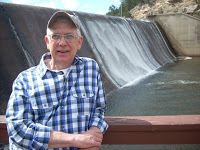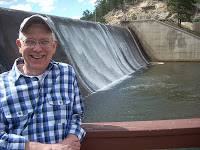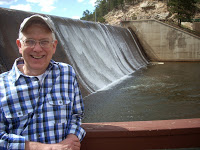Early on the nursery rhyme “Georgie Porgie puddin’ and pie, kissed the girls and made them cry, when the boys came out to play Georgie Porgie ran away” spoke to me because my mom sometimes called me Georgie Porgie. I may have been that little boy. But in my version he liked looking at the boys he sometimes ran away from. He learned to play with them also. Well you can imagine more parts to that story.
James Fennimore Cooper’s The Last of the Mohicans grabbed my attention in 9th grade. I little understood it except to know that Indians were living where whites wanted to live and that Indians had Indian enemies and used the whites against them just as the whites used Indians against each other. While Cooper was a white, he opened the idea for me of becoming friends and benefitting from the Indians who knew the land so well and had their own ways of understanding and relating to it. Back then I understood little of the real conflict except to realize that these native people were being manipulated in ways I judged immoral. I was fascinated by the tribal ways of perceiving the world and appreciated their familial and tribal loyalties.
At church, missionaries told stories of carrying the gospel to other lands. I didn’t want to be a missionary but I did want to meet the people who understood the world so differently. This story structure challenged me to be open to others from far-away places and to appreciate the otherized perspectives of those who lived nearby. Dr. Victor Rambo’s story of finding a true and useful medical mission in India made sense to me. Son of missionaries, he wanted to help Indian people. His first attempts were unsuccessful. He earned a specialty in ophthalmology and returned to be very helpful for many years. Emulating him, his determination and courage, I realized his practical approach could help guide my own personal and ministerial development. I realized I needed to see real people with real needs.
For a long time the David cycle in the Bible, those stories about the boy, the young man, even the older man who became King of Israel, helped shape my moral life. I liked the David stories of loyalty, bravery, friendship, love, sin, and most important, of being a person one biblical author described as “a man after God’s own heart.” I liked that and its great flexibility. I was able to pattern myself somewhat like David (although I had little power and never murdered anyone for personal or political reasons), and I often used his stories in religious education resources I developed.
The stories of my Cambodian friend Narin Oum inspired me with his collecting and valuing of various religious traditions, seeing their connection in his own life journey. His conversion model was very tolerantly Asian Buddhist as he studied and became a Muslim and later a Christian. Hearing his story opened my imagination to new outcomes for my own life. I learned to value all my experiences and to let them instruct me how to understand my new life.
Ethan Mordden’s series of books about gay life in Manhattan with titles like I’ve a feeling we’re not in Kansas anymore, Buddies, and How’s your romance? helped shape my gay life. These stories, some of them extreme, opened me to a vast world of information that exceeded what I’d learned from other writers and from my gay friend Ted. I got a view of the diversity of what is sometimes called gay identity and community. I realized my own experiences would be a tiny part of what actually takes place. I did find my own space within this diverse world of my own people, one that embraces GLBTs and many other queer folk.
I’m sure I still little understand how all these stories came together even in my mind. Still they help me navigate my life and open my eyes to possibilities that were never directly part of the curriculum of any school I attended or any theological or philosophical approach I encountered.
I love stories and their power to transform. I hope to keep learning in my maturity and plan to keep listening to your stories told here at The GLBT Center of Colorado.
© 2 October 2017
About the Author
Phillip Hoyle lives in Denver and spends his time writing, painting, and socializing. In general he keeps busy with groups of writers and artists. Following thirty-two years in church work and fifteen in a therapeutic massage practice, he now focuses on creating beauty. He volunteers at The Center leading the SAGE program “Telling Your Story.”
He also blogs at artandmorebyphilhoyle.blogspot.com



